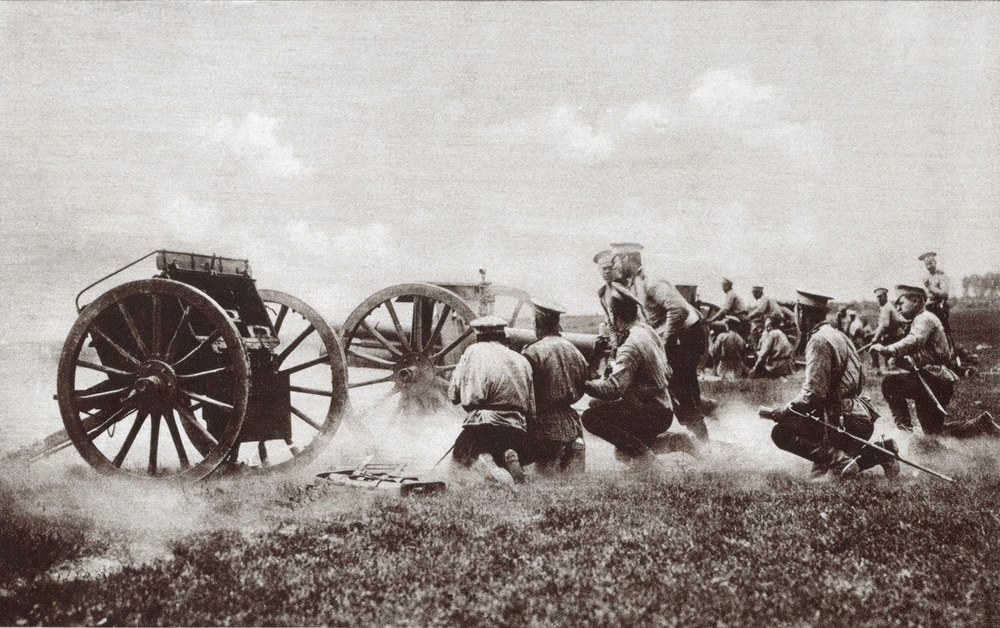Unfortunately, history will always remind us of the brutality of World War I. From 1914 to 1918, more than 30 countries waged war on one another.
Overwhelmingly, nations such as the United States, Italy, Britain, France, Russia, and Serbia sided with the Allies. The Central Powers, which included the Ottoman Empire, Bulgaria, Austria-Hungary, and Germany, were the main antagonists.
So, which country lost the most soldiers during World War One?
Russia lost the most soldiers during World War I, totaling approximately 1.7 million. They had deployed over 12 million soldiers to the battle.
They also ended up with the most wounded soldiers, amounting to more than 4.95 million.
Table of Contents
How Many Lives Were Lost During World War 1?

More than nine million troops were killed in World War I, and another 21 million were wounded. Nearly 10 million civilians died as a result of the conflict.
Roughly 80% of France and Germany’s male population from age 15 to 49 went to war, making them the two most devastated countries.
Allied Powers Losses:
The Allied Powers deployed a total of 42,612,810 soldiers during World War One. Of that number, 5,211,809 were killed in battle or died.
Additionally, 13,003,004 ended up with wounds of varying degrees. Another 4,124,890 were imprisoned or went missing. The total casualties for the Allies were 22,165,291.
Central Powers Casualties
The Central Powers mobilized a total of 22,850,000 during World War 1. Of that number, 3,386,200 lost their lives. Also, 8,388,448, had minor to major wounds.
Another 3,629,829 went missing or were imprisoned. The total Central Power casualties during World War One was 15,404,477.
What prompted World War One?
The Serbian government, believing that Austria-Hungary was preparing for war, commanded the mobilization of the Serbian army and pleaded to Russia for support. Vienna declared war on Serbia on July 28, and the fragile truce among Europe’s main nations swiftly crumbled.
World War I officially began less than a week after the alliance of Russia, Belgium, France, the United Kingdom, and Serbia against Austria-Hungary and Germany.
How many people were killed in World War One?
Some 8,500,000 men died due to injuries and/or illnesses in World War I, far more than in any previous conflict. Artillery caused the most deaths and injuries, followed by small weapons and then chemical attacks.

The bayonet, which the pre-war French army regarded as a definitive weapon, actually resulted in very few deaths. During the war, especially after 1914, warfare became increasingly automated and resulted in casualties even though no significant events were underway at the time.
Scores of Allied troops, as well as German fighters, were killed on even the most peaceful of days on the Western Front. On July 1, 1916, throughout the Battle of the Somme, the British Army sustained 57,470 fatalities, the most in a single day.
In World War One, how were the soldiers positioned?
The Somme and Verdun’s conflicts were characterized by Sir Winston Churchill as being fought amid “double or triple walls of artillery fueled by mountains of shells,” – a description that has come to symbolize trench warfare ever since.
Infantry units clashed in an open area that was encircled by these guns. They fought until they were no longer able to fight in this risky position.
Divisions were then reassigned to different departments.
There were so many troops killed and dismembered during the battle that a landmark in France honors the 150,000 unknown soldiers believed to be interred there.
Are the WW1 casualty lists accurate?
Preparing reliable casualty numbers proved to be challenging in this type of conflict.
There were uprisings in 1918 in four of the rival nations, and the new administration’s focus was diverted from the dismal task of war losses. There is no guarantee that a loss table will ever be correct.
How many civilians were killed in the First World War?

The number of innocent deaths due to the conflict is also shrouded in mystery, as are the exact numbers of soldiers killed in action. There were no official organizations in place to keep track of the deaths.
However, large numbers of people died as a result of the mass migration caused by the war’s movement across Europe and Asia Minor in 1918, which was followed by the most devastating influenza pandemic in history.
Around 13 million civilians died as a result of the war, which is more than the number of soldiers killed. Hunger, hypothermia, sickness, military confrontations, and mass killings all played major roles in the deaths of these innocent civilians.
What was Germany’s strategy for killing so many soldiers?
With the help of the Schlieffen Plan – named for its inventor, German Field Marshal Alfred von Schlieffen – Germany opened World War I on two fronts, advancing on France through neutral Belgium and confronting Russia.
During the First World War, German troops penetrated the Belgian border on August 4, 1914. Siege cannons were used by the Germans in the first combat of World War I to conquer Liege by August 15.
As they progressed across Belgium toward France, the Germans killed civilians and executed a Belgian religious leader they had suspected of instigating civilian opposition. They left a trail of murder and mayhem.
How did the Allied troops counterattack to prevent more deaths?
A French-British-led force battled an invading German army that had advanced as far as 30 miles from Paris in northeastern France during the First Battle of the Marne on September 6–9, 1914. At this point, the Germans were forced to retreat north of the Aisne River by a successful counterattack from the Allies.
German hopes for a swift triumph in France were dashed as a result of this defeat. There were trenches excavated on the Western Front for more than three years, where both sides waged a brutal war of attrition.
From February through December of 1916, soldiers fought in the Battle of Verdun as well as the Battle of the Somme (July–November 1916). The Battle of Verdun alone cost the German and French armies about a million lives.
How did Russian involvement in World War I come to an end?
Russia’s army launched a series of offensives on the Eastern Front during World War I and was unable to push past the German defenses. Because of Russia’s military defeat, economic instability, a lack of food, and other necessities, there was growing dissatisfaction among the majority of Russia’s population.

That was particularly among the country’s poorest workers and villagers. Czar Nicholas II as well as his widely disliked bride Alexandra, a German-born Russian, faced an upsurge in anti-imperial sentiment.
Lenin and the Bolshevik Revolt of 1917, driven by Vladimir Lenin as well as the Soviet Union, led to the end of Russian involvement in World War I and destroyed czarist power. German troops on the Western Front were freed by an armistice between Russia and the Central Powers in early December 1917.
What was America’s role in World War One?
Woodrow Wilson’s stance of neutrality and continued trade and transportation with European nations on either side of the divide kept the United States on the outskirts at the start of World War I. In the wake of Germany’s unrestricted submarine hostility targeting neutral ships, particularly those transporting people, neutrality became increasingly impossible to preserve.
There were several merchant ships and passenger ships that were lost, including those that were flagged as belonging to the United States, after Germany declared its waters encircling the British Isles as being war zones in 1915.
What made America declare war on Germany?
When the British ocean liner Lusitania, carrying scores of Americans via New York to Liverpool, England, was sunk by a U-boat in May 1915, there was widespread outrage in the United States.
When the United States entered World War I in 1917, Congress passed an armaments funding bill totaling $250 million. Woodrow Wilson stood before Congress on April 2 and asked for a formal declaration of war after Germany sank four additional U.S. commerce ships a month later.
How many Casualties were there overall during World War One?
The warring factions sent a total of 65,462,810 to fight each other in WW1. That bloody battle led to the death of 8,598,009, some as young as fifteen years old.
Another 21,391,452 were left nursing a wide range of injuries, while 7,754,719 ended up imprisoned or missing.
Overall, there were 37,569,768 casualties during the first world war.
How did World War One end?

When the United States began sending men and supplies to the Western Front in 1918, it shifted the balance in favor of the Allies. November 11, 1918, marked the date on which Germany and the Allies signed an armistice ending the First World War.
With so much bloodshed and devastation, World War I was dubbed “the war to end all wars.” Unfortunately, the 1919 Treaty of Versailles, which formally ended the first world war, imposed harsh punishment on Germany and set the stage for World War II.

















